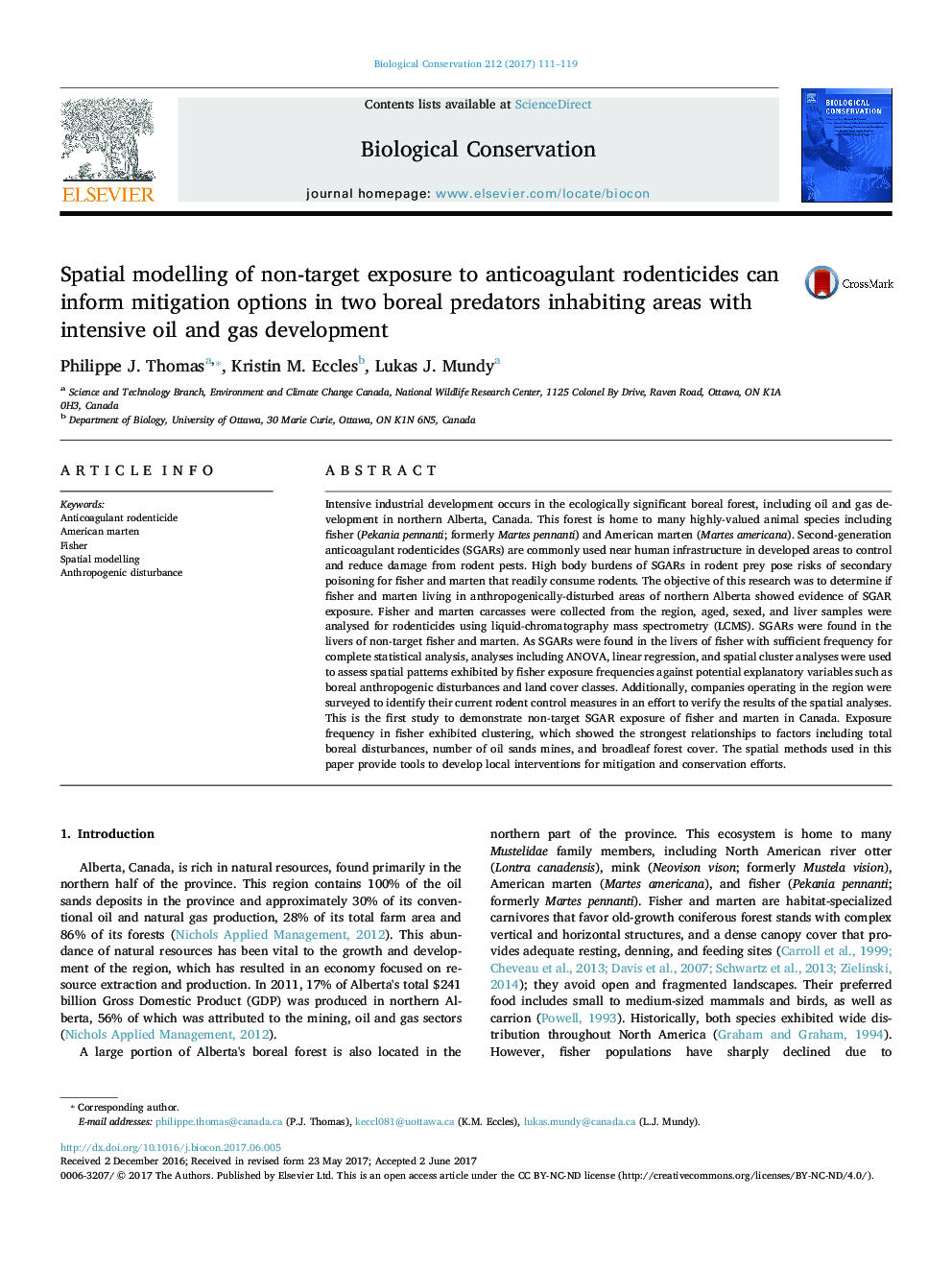| کد مقاله | کد نشریه | سال انتشار | مقاله انگلیسی | نسخه تمام متن |
|---|---|---|---|---|
| 5743096 | 1412296 | 2017 | 9 صفحه PDF | دانلود رایگان |
عنوان انگلیسی مقاله ISI
Spatial modelling of non-target exposure to anticoagulant rodenticides can inform mitigation options in two boreal predators inhabiting areas with intensive oil and gas development
ترجمه فارسی عنوان
مدلسازی فضایی مواجهه غیر هدف با موش صحرایی ضد انعقادی میتواند گزینههای کاهش ریسک را در دو شکارچی ساحلی ساکن در مناطق با توسعه نفت و گاز شدید
دانلود مقاله + سفارش ترجمه
دانلود مقاله ISI انگلیسی
رایگان برای ایرانیان
کلمات کلیدی
ضد انعقاد شیمیدرمانی، زخم آمریکایی، فیشر، مدلسازی فضایی، اختلال انسانی،
موضوعات مرتبط
علوم زیستی و بیوفناوری
علوم کشاورزی و بیولوژیک
بوم شناسی، تکامل، رفتار و سامانه شناسی
چکیده انگلیسی
Intensive industrial development occurs in the ecologically significant boreal forest, including oil and gas development in northern Alberta, Canada. This forest is home to many highly-valued animal species including fisher (Pekania pennanti; formerly Martes pennanti) and American marten (Martes americana). Second-generation anticoagulant rodenticides (SGARs) are commonly used near human infrastructure in developed areas to control and reduce damage from rodent pests. High body burdens of SGARs in rodent prey pose risks of secondary poisoning for fisher and marten that readily consume rodents. The objective of this research was to determine if fisher and marten living in anthropogenically-disturbed areas of northern Alberta showed evidence of SGAR exposure. Fisher and marten carcasses were collected from the region, aged, sexed, and liver samples were analysed for rodenticides using liquid-chromatography mass spectrometry (LCMS). SGARs were found in the livers of non-target fisher and marten. As SGARs were found in the livers of fisher with sufficient frequency for complete statistical analysis, analyses including ANOVA, linear regression, and spatial cluster analyses were used to assess spatial patterns exhibited by fisher exposure frequencies against potential explanatory variables such as boreal anthropogenic disturbances and land cover classes. Additionally, companies operating in the region were surveyed to identify their current rodent control measures in an effort to verify the results of the spatial analyses. This is the first study to demonstrate non-target SGAR exposure of fisher and marten in Canada. Exposure frequency in fisher exhibited clustering, which showed the strongest relationships to factors including total boreal disturbances, number of oil sands mines, and broadleaf forest cover. The spatial methods used in this paper provide tools to develop local interventions for mitigation and conservation efforts.
ناشر
Database: Elsevier - ScienceDirect (ساینس دایرکت)
Journal: Biological Conservation - Volume 212, Part A, August 2017, Pages 111-119
Journal: Biological Conservation - Volume 212, Part A, August 2017, Pages 111-119
نویسندگان
Philippe J. Thomas, Kristin M. Eccles, Lukas J. Mundy,
